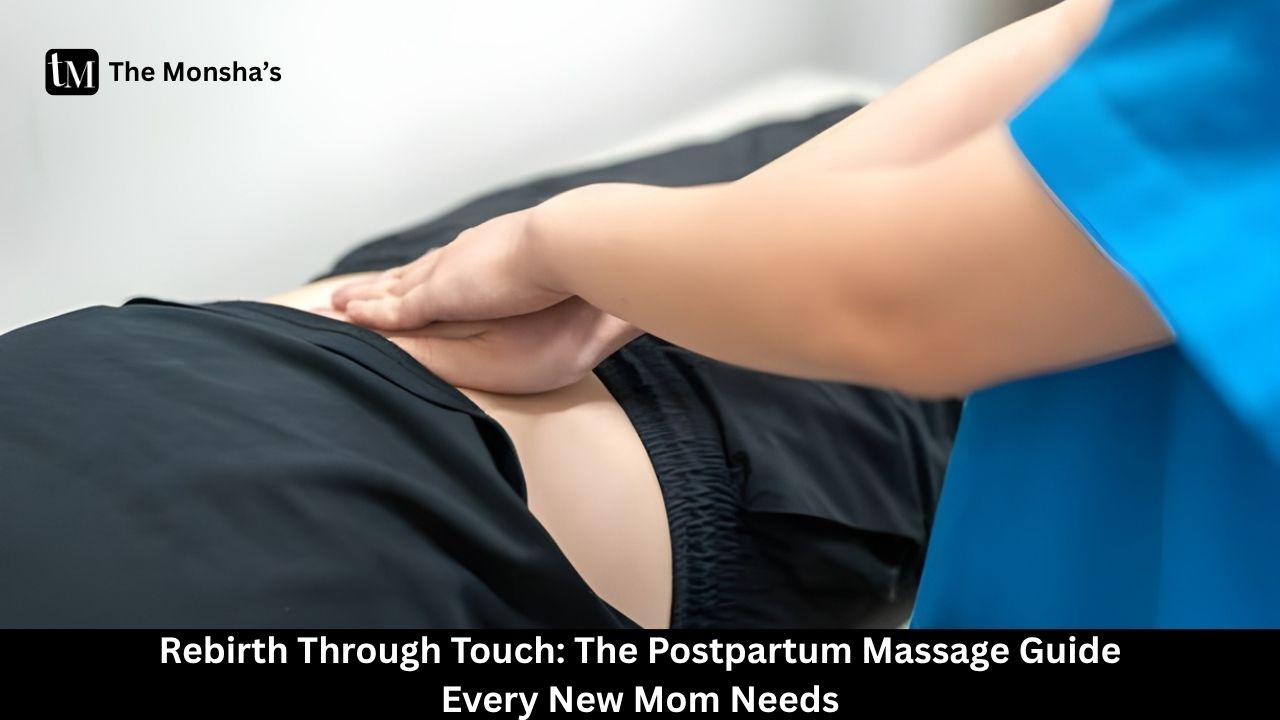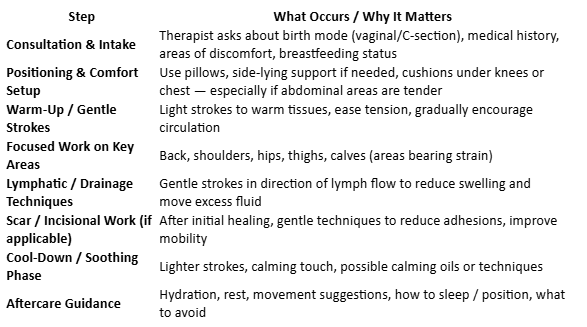
Postnatal massage is not just pampering — it supports your body’s recovery after birth, eases aches, boosts mood, and helps with swelling. In this post, you’ll find a clear sequence of steps for a safe massage, deep dives into key benefits (with fresh research), cautions, and real talk from a weary-but-well-informed beauty-skin blogger. Let’s get your body some justice.
After pregnancy and childbirth, a woman’s body undergoes drastic changes — stretched ligaments, shifted organs, hormonal rollercoasters, fluid retention, tension from feeding or holding baby. A thoughtfully done postnatal massage helps support this reset. It’s not about indulgence; it’s about restoration.
Traditional postpartum care in India (and many cultures) emphasizes rest, warmth, nourishing food, and gentle bodywork during the “chilla” period. Think of postnatal massage as a modern addition to those wisdoms, combining tradition + evidence.
To appreciate why massage helps, you need to see what your body just went through:
These lead to aches, heaviness, soreness, and emotional fatigue. Massage helps by improving circulation, improving lymph drainage, reducing muscular tension, and promoting better nervous system recovery.
So yes — the data is mounting. It’s not a cure-all, but it’s a strong ally.
Here’s a typical sequence. (Note: practitioners might vary — always ask and adapt to what your body needs.)

In some sessions, therapists may incorporate aromatherapy, hot towels, gentle stretches, or targeted breathing techniques, depending on comfort and safety.
Below are the most compelling benefits — plus what’s going on inside.
After childbirth and hours of nursing or holding baby, your back, shoulders, hips feel like they’ve collected every ache in the solar system. Massage releases muscle knots, improves microcirculation, and reduces stiffness.
Pregnancy increases fluid volume; postpartum, that fluid needs clearing. Gentle lymphatic techniques help shift fluid, reducing puffiness in legs, ankles, hands, belly.
Massage reduces cortisol (stress hormone) and supports mood-regulating pathways. Many new mothers experience “baby blues” or mood shifts; touch + safe space help.
Gentle work can support uterine involution (shrinking) and encourage organs to shift back into position, especially when combined with care from your medical provider.
Your brain practically begs for rest, but baby-care hours make it rare. Massage helps push you into deeper, restorative sleep phases.
If you had a C-section, gentle massage after the clotting is stable can help prevent excessive scar adhesions and improve tissue mobility.
Relaxed posture and loosened chest/shoulder muscles can ease breastfeeding strain. Plus, mental calm helps with let-down reflex.
Here’s a visual summary:


After the table, you can expand with client stories or micro-examples like: “That ache between shoulder blades? It’s from cradling baby and feeding — massage helps.”
Ideal candidates:
Caution / Avoid if:
Always share your medical history. A good therapist will adapt or postpone certain techniques.
Myth: “Massage will undo my body damage instantly.”→ Truth: It helps gradually. You won’t bounce back overnight.
Myth: “You can’t massage near a fresh C-section.”→ Partially true. Stay away until cleared (usually after initial healing), but scar work can be part of the plan later.
Myth: “One session cures everything.”→ Nope. It supports recovery — consistency wins.
Real talk: Some days you’ll just cry, some you’ll feel zero pain — that’s normal. Massage is a tool, not a miracle. And haan, ek baar ke massage se puri rukawat nahi khatam hogi — patience chahiye, just like skin routines 😉.
Q: How soon after birth can I get a postpartum massage?
A: It depends on your mode of delivery and healing. Vaginal birth may permit safe massage earlier; with a C-section, wait for doctor’s clearance and initial wound healing.
Q: Can I massage my abdomen right away?
A: Only if healing is stable and therapist is skilled. Typically, work near abdomen begins after several weeks.
Q: Is it safe if I had stitches, tears, or an episiotomy?
A: Yes, but the therapist must be trained in postpartum/specialty massage and avoid direct pressure on trauma zones initially.
Q: Can I bring my baby to the session?
A: Some therapists allow it; others ask you to arrange babysitting or support. Confirm in advance.
Q: What if I’m breastfeeding — will massage affect milk?
A: Massage helps lower stress and may support let-down. Avoid deep pressure on breasts unless therapist is certified and it’s safe in your area.
Q: Will massage reduce belly fat or “pooch”?
A: It helps with fluid, relaxation, and recovery — it is not a substitute for gradual core strengthening, nutrition, and movement.
Motherhood is a marathon, not a sprint. Your body just did a heroic job; it deserves mercy, gentle restoration, and touch that holds rather than pushes. A good postnatal massage — done safely, consistently, by someone who cares — can be one of the kindnesses you give yourself in those early chapters.
Go slow. Communicate. Honor your pace.
And haan, thodi shi body pampering zaroori hai because “no rest, no glow” — especially when you're carrying a mini-boss 24/7. 💖